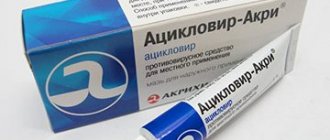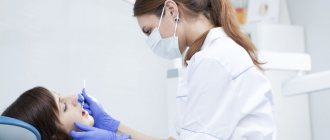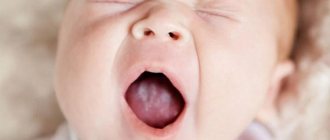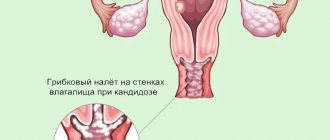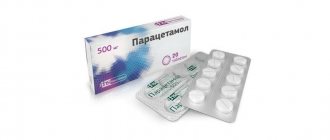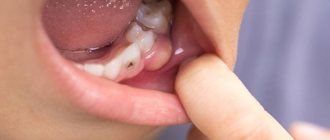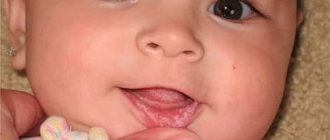Candida fungi are companions of a person throughout his life. They are found everywhere: in the air that a person breathes, in food, on surrounding objects. They live in limited quantities in the human body: on the skin, in the mouth, in the rectum, on the genitals. Their presence does not always mean some kind of disease.
Thrush in children's mouth
What is Candida fungus?
The body is a very smart system. With the help of immunity, it controls the reproduction and development of foreign organisms. Healthy microflora of the human body inhibits the rapid development of Candida fungus and helps limit their pathological growth, which can cause harm. Hormonal imbalances, taking antibiotics, and dysbacteriosis lead to a decrease in immunity, and the body ceases to control the proliferation of bacteria. This leads to the formation of inflammatory processes, which, in turn, cause damage to the mucous membranes of the mouth.
Infection of the oral mucosa of a child with thrush
Important! The child's body does not yet have a fully formed intestinal microflora. His immunity is just beginning to develop. This explains why thrush occurs most often in young children.
Pathological proliferation of Candida fungi in the oral cavity leads to the appearance of candidiasis. This is accompanied by the appearance of numerous small white dots on the baby’s oral mucosa. They can be easily seen when the child is crying or eating. When in doubt about the presence of plaque, you can gently wipe the area where there are white spots with a napkin. If these are food remains, they will be easily removed, and not a trace will remain in their place. If this is a plaque from the proliferation of a fungus, an inflamed red area will form in place of the white dots.
Important! The formation of white plaque is also accompanied by secondary signs of the disease: problems during feeding, poor appetite, frequent crying, poor sleep, nervousness, moodiness.
About candidiasis
Why does thrush occur?
The child is born without immunity. From the first days of life, immunity begins to develop. Mother's breast milk plays the role of a “donor” of immune cells. But along with the mother’s milk, the fungus enters the child’s body. The second way Candida fungi enter the baby’s body is during his birth. And the third is the transmission of microorganisms from other people through contact: through hands during play and feeding, through the mouth and by air.
The fungus can enter the baby's body through mother's milk.
General tips for caring for a small child, which are also preventive protection against thrush.
- Boiling nipples, pacifiers, and bottles should be done every day.
- Periodically, you need to wash the pacifiers in a soda or honey solution.
- You also need to boil those toys that the child can put in his mouth. If they are not subject to boiling, wash thoroughly with soap and water and rinse in the solution described above.
Parents should boil toys that the child may put in his mouth.
- Use antiseptic solutions to wash the mother's nipples if the baby is breastfed. In this case, if the child has thrush, the mother should be treated along with him.
- The rapid disappearance of plaque from thrush should not mean that the disease is already over. It is necessary to complete the entire course of treatment so as not to provoke a relapse of the disease.
It is important to complete treatment, since the disappearance of symptoms does not guarantee that a relapse will not occur.
Pathogenic proliferation of fungi in a child’s body can cause hot and dry air in the room where the baby is often located. Candida fungi are always found in small quantities in a child's mouth. Saliva, which contains special substances, inhibits their rapid reproduction. Therefore, it is so important that the baby’s oral mucosa does not dry out. In addition to incorrect temperature conditions, a runny nose or frequent crying can cause dry mouth in a child.
Important! A dry and warm environment is ideal for the growth of Candida fungus. Therefore, it is so important to control the air temperature in the room, humidify it, and ventilate it often.
It is worth humidifying the room in which the baby is located
The following problems can also cause thrush:
- frequent regurgitation and retention of food in the mouth;
- formation of microscopic cracks on the gums and lips;
- congenital disorders of the oral mucosa
- the use of antibiotics and hormonal drugs to treat diseases, which make the child’s immunity weaker;
- the child was born premature;
- feeding the child with artificial formulas.
Due to artificial feeding, the baby may develop such a pathology
Premature babies, formula-fed babies and those taking antibiotics for a long time fall into the category at high risk of developing thrush. This is explained by one reason - weak immunity.
Important! In healthy breastfed children, thrush appears much less frequently. And if it does appear, it goes away much easier and faster.
Children who are breastfed are less likely to develop oral thrush
Disease prevention
To get rid of candidiasis completely, you need to adhere to a number of simple preventive measures. Among them:
- compliance with basic hygiene rules: wash your hands thoroughly, care for the skin and mucous membranes of the child;
- maintaining an optimal microclimate in the apartment;
- strengthening the child's immunity.
Thrush in a baby is a serious disease, the recurrence of which can only be avoided by timely consultation with a doctor. It is prohibited to independently treat childhood candidiasis, without undergoing the necessary examinations, based on knowledge obtained from newspaper (magazine) articles.
How to diagnose thrush?
For a doctor to diagnose “oral candidiasis” in a child, it is enough to observe the clinical picture of this disease. The mucous membranes throughout the oral cavity are covered with a white coating in the form of small dots. Gradually these dots merge into large white spots. They cause poor sleep, refusal to eat, and frequent regurgitation. Visually, they look like curdled milk, which is why candidiasis is called thrush.
- Thrush or vulvovaginal candidiasis. Symptoms and treatment
About oral candidiasis in children
Additional tests are usually not required to determine the disease. Local therapy is prescribed.
Important! A quick positive result of therapy indicates a correctly made diagnosis.
A complete diagnosis of thrush in children is carried out using such studies.
| Type of study | Description |
| Microscopic | Scrapings are taken from the mucous membranes of the mouth, and the resulting material is examined under a microscope. In this way, cells and threads of Candida fungi are detected |
| Bacteriological | Sowing is done on a nutrient medium for the growth of bacteria, the type of fungi and the number of their colonies are determined. To select the most suitable antifungal drug, the reaction of the identified type of fungus to their action is checked. Such an analysis must be done in cases where the prescribed drug does not provide a therapeutic effect. |
| Serological | The study of antibodies in human serum, based on certain immune responses. Detection of antibodies to the causative agent of this bacterium allows us to determine the presence of a specific type of fungus. |
Serological study
Treatment of thrush in children
The development of oral thrush in children is one of the disorders in the child’s body that does not need to be treated with special antifungal agents. The main thing in this process is to provide the child with a comfortable microclimate with moist and cool air. It is also necessary to ensure that the child breathes through the nose, since the mucous membranes dry out quickly when breathing through the mouth. This leads to cracks and wounds, which promote the proliferation of fungi.
It is important that the child breathes through the nose
Let us list the basic conditions necessary for the body to fight thrush:
- normal microclimate in the room;
- free nasal breathing;
- strong immunity.
It is worth strengthening the immunity of the baby and schoolchildren
Important! If all three points are followed, the white plaque should go away without any help. Usually, the child’s immunity is not yet fully developed. Therefore, there is a need to help him cope with the disease.
Soda and honey solutions in the treatment of thrush
The appearance of white plaque in a child’s mouth requires immediate action to eliminate it. One of these emergency actions is to moisten the child’s oral mucous membranes with a soda solution. Method of its preparation: one teaspoon of soda is poured into warm water (0.2 l) and stirred until dissolved. Using a bandage, you need to treat the affected areas of the mouth with this solution. It is important to wet it, and not to rub or remove the white coating. Such actions can damage the surface of the shell and thereby allow harmful microorganisms to enter the child’s body.
Important! Such procedures must be done up to five times a day.
Use soda solution
The same procedure can be carried out using a honey solution. The method of preparing it is as follows: dissolve one teaspoon of honey in two teaspoons of warm water. Water for preparing solutions is always boiled. The honey solution tastes good, so the child agrees more easily to this procedure. Of course, the use of honey requires caution, because it can cause allergies in the baby.
Important! All procedures using this solution are performed every two to three hours.
Honey solution is also used for treatment.
Sometimes it is very difficult to force a small child to open his mouth for therapeutic procedures. There is a proven method: press your thumb on his chin and hold in this position until the procedure is completed.
The use of medications to treat thrush
For advanced disease in newborns, traditional drug treatments are used. They are used when there is a risk of candidiasis affecting a larger part of the child’s body. If fungi multiply in the intestines, this will disrupt its natural microflora and thereby harm the body and reduce immunity.
- Frequent urination or why do I pee so often?
Important! If the fungus moves to the genitals of girls, vulvovaginitis and synechia may develop, which are difficult to treat or lead to the need for surgical intervention.
Vulvovaginitis
Doctors advise not to expect complications to appear, but to begin treatment immediately with medical means. Treatment of infants begins with checking the mother for thrush, since unilateral treatment in this case will not have a positive effect. The doctor will prescribe the necessary treatment for the baby's mother.
It is better to start treatment after the first symptoms appear
Important! The appearance of signs of thrush in a newborn baby requires immediate examination by a pediatrician. Depending on the degree of the disease, the doctor prescribes appropriate treatment.
- The initial stages of thrush in a child's mouth are usually treated with special aqueous suspensions to treat the white plaque. For example, a Nystatin suspension is suitable, which you can purchase at a pharmacy or make yourself. The recipe for its preparation: one tablet is ground into powder and diluted in a small amount of water. Plaque in the mouth should be treated with this product every five hours.
"Nystatin"
- Plaque can be cleaned with a soda solution, the preparation recipe for which is described above, or with a one percent solution of hydrogen peroxide.
- To wash the affected areas, a one percent solution of clotrimazole or the drug “Candide” can be used. These products can be used to treat the mucous membranes of the mouth two or three times a day.
"Clotrimazole"
- If external rinsing with medicinal agents does not produce results, this means that the child has a more severe form of candidiasis and is the basis for the use of antibiotics. In such cases, the doctor prescribes antifungal drugs for oral administration.
With effective and timely treatment, the white plaque from thrush disappears quickly. The maximum treatment period for the disease is 10 days. The older the child gets, the less often relapses of this disease are observed. This is explained by the formation of stable immunity to this genus of microorganisms.
If treatment is started on time, the white plaque in the mouth will quickly disappear
Treatment of thrush in children after one year
When a child develops a white coating after a year, soda solutions are used, which are also used for very young children. It is necessary to consult a doctor as soon as possible to prescribe treatment. Oral antifungal medications are usually prescribed.
Important! You should not decide to take such medications on your own.
It is very important to see a doctor right away
In addition, local procedures are carried out.
- Areas with a white coating are lubricated with medications: Nystatin ointment, iodine-containing Lugol solution or Miramistin antiseptic ointment.
"Lugol" - Instead of rinsing, you can rinse your mouth with a special solution if the child knows how to do this. The preparation recipe is as follows: an ampoule with vitamin B12, a crushed Nystatin tablet, 12 ml of pharmaceutical saline solution are mixed in a glass. The doctor may prescribe a complex of vitamins to be taken orally in the form of syrups.
Use saline solution
- Itchy areas of the skin around the mouth may appear. They are treated with Fenistil gel, which has antihistamine properties.
"Fenistil"
- For children after three years of age, antiseptic preparations in the form of aerosols are widely used. They are convenient for treating the oral cavity.
- When treating thrush, rinsing the mouth with tinctures of medicinal herbs: calendula, eucalyptus, sage has a good effect. They are prepared according to this recipe: a tablespoon of dried leaves is poured into 0.2 liters of boiling water and left for 30 minutes. Such tinctures promote rapid healing of cracks in the mouth, relieve itching and inflammation. Instead of herbs, you can use aloe juice, which is diluted with water and used as a mouth rinse.
You can rinse your mouth with tinctures of calendula and sage
All described methods of treating thrush in children after one year require a special diet. It is necessary to exclude all sweets and baked goods, dairy products, sweet teas and drinks. Meals should consist mainly of boiled eggs, semi-liquid porridges with water, lean meat, fish, and potatoes. Drinking plenty of fluids is recommended.
It is important to temporarily exclude dairy products and sweets from the diet of the baby and mother.
Treatment of thrush in young children under one year of age
The appearance of a mild form of oral thrush in children under one year of age is usually treated without the use of medications. It is only necessary to provide the baby with the right living conditions.
- Maintaining cleanliness in the room where the baby is, regular wet cleaning, washing the toys he uses, boiling pacifiers, feeding bottles and pacifiers are essential.
Parents should carry out wet cleaning regularly
- The ideal microclimate in the room where the baby is: air temperature no higher than 20 degrees Celsius, sufficient humidity, but not more than 60%. Excessive dampness in the room allows various bacteria and mold to develop. Mold can lead to various diseases.
- Constantly moisturize the child’s oral mucosa with special means. It is important to ensure that your baby breathes through his nose. A stuffy nose causes the child to constantly breathe through the mouth.
It is worth moisturizing the baby's oral mucosa
For more severe forms of thrush, medications are used even for the smallest children. The doctor may prescribe antifungal and antiseptic solutions for local therapy. There is an effective remedy for washing affected areas in the mouth, which can be easily prepared at home: mix 10 ml of pharmaceutical hydrogen peroxide, 12 g of baking soda in 1 liter of boiled water. Soak your finger wrapped in a bandage in this solution and treat your gums and tongue.
You can treat your baby's mouth with a bandage.
Candidiasis in newborns: general concepts
Thrush that appears on the tongue of newborn children is a pathology caused by the yeast-like fungi Candida. The genus of infectious agents includes over 150 types of unicellular protozoa, but most often the development of the disease in question is provoked by the fungus Candida albicans.
These microscopic organisms are human symbionts that acquire pathogenic properties only under certain conditions.
The main sign of a progressive disease is a white plaque of a pinpoint nature that appears in the child’s mouth.
Inexperienced parents sometimes confuse the detected cheesy formations with physiological deposits on the mucous membrane, since they look the same.
Natural plaque on the tongue that occurs after feeding (regurgitation) can be easily removed with a sterile gauze swab. Deposits that signal the development of the disease cannot be quickly removed. After eliminating pathological formations, redness and bleeding ulcers are found on the tissues of the oral cavity.
The following photo will help you understand what physiological plaque and plaque looks like when there is thrush in the mouth of a newborn baby:
Classification of thrush
Pediatricians distinguish 3 forms of the disease:
- Mild, in which the plaque is located on the cheeks and tongue. The deposits are point-island in nature.
- Moderately severe, characterized by the appearance of plaque on the hyperemic tissues of the hard palate and the child’s lips. Pathological formations diffusely cover the tongue and cheeks.
- Severe, characterized by the presence of a filmy coating tightly adhered to the oral mucosa. Upon examination, seizures, lesions of the skin and nails are revealed. The disease is accompanied by changes in the structure of the tissues of the bladder, bronchi, and internal organs of the child.
The photo will help you get acquainted with the external manifestations of different forms of thrush:
Children's thrush is divided into acute, which is quite easy to deal with, and chronic. The latter is distinguished by the presence of relapses and is differentiated into yeast glossitis, will come, generalized forms of lesions.
Danger of disease
According to statistics, those at risk for candidiasis include infants born prematurely, infants with a weakened immune system and congenital defects.
Babies who have undergone surgical interventions and newborns who are bottle-fed are susceptible to developing the disease.
Thrush that appears in a baby's mouth progresses quickly without treatment. The lack of necessary therapeutic measures leads to complications, including:
- malfunctions of internal organs;
- weight loss (if you refuse breast milk);
- dehydration;
- candidal sepsis.
Refusal to visit a doctor, as well as treatment with folk remedies without prior consultation with a pediatrician, can lead to death.
Complications of thrush
Thrush (candidiasis) is a disease, so its appearance requires special measures for immediate treatment. A mild form of candidiasis can develop into a more severe form if left untreated. The child’s body is designed in such a way that an infection from one place quickly spreads to another. Therefore, thrush as a disease cannot be underestimated. In weakened children, Candida fungi can spread into the intestines and disrupt its natural environment.
Fungi can enter the intestines, where they will also begin to multiply
Manifestations of thrush in the genitals of girls can become especially difficult to treat. Delayed treatment can lead to serious consequences: a fungus in the vagina can cause vulvovaginitis, which leads to fusion of the labia or vaginal mucosa (synechia). Treatment of this problem occurs only surgically. Therefore, treatment of white plaque in the mouth of girls should be accompanied by constant parental monitoring of the condition of the genital organs.
- How long does it take for drugs to leave the body?
Important! At the slightest sign of complications in the form of redness and discharge, consultation with a specialist is necessary.
Synechia
The presence of a large number of bacteria in the oral cavity can cause them to enter the child’s blood, lymphatic system, and from them to all organs. It is necessary to start treatment on time to prevent such a serious complication of thrush.
Important! Treatment should continue until the child recovers completely. Otherwise, the disease can become chronic, which will significantly weaken the immune system, and this will cause the development of allergies and other diseases.
Bacteria can also enter the blood
Factors stimulating the development of the disease
Active growth of colonies of saprophytic fungi occurs when the child’s immunity decreases. Insufficient body resistance is due to the following reasons:
- developmental defects;
- birth injuries;
- malnutrition;
- presence of infectious diseases.
Easy fixation of pathogens on the surface of the infant’s oral cavity is facilitated by the immaturity of the mucous membranes and tissue damage.
A child can become infected with candidiasis from the mother while passing through the birth canal or during breastfeeding. The source of infection can be relatives who were not treated for candidiasis on time, or family members who violate hygiene rules.
Additional causes of the disease include:
- frequent regurgitation;
- dry air, high temperature in the living room;
- excessive consumption of drinks containing sugar;
- poor quality sterilization of bottles and nipples;
- failure to comply with sanitary standards.
Thrush in the mouth in infants and newborns can occur for reasons related to the treatment of certain diseases. In pediatrics, therapeutic regimens that include corticosteroids and antibiotics are often used. The latter cause dysbiosis in the child and disrupt the natural balance of intestinal microflora. In the absence of beneficial microorganisms, pathogens begin to actively develop.
Prevention of thrush in children
Preventive measures for the occurrence of candidiasis in children.
- In case of general or infectious diseases of the child, monitor the condition of the oral mucosa so as not to miss the appearance of thrush at the initial stage.
- Use antibiotics only when necessary. They are prescribed after conducting a general blood test of the child and obtaining the appropriate results. During the use of antibacterial drugs, fluconazole is prescribed. Its use is associated with disease prevention. The dose is prescribed by the doctor depending on the child’s body weight and the degree of risk of developing thrush.
Antibiotics should not be used unless prescribed by a doctor
- Timely detection of thrush in the mother of the child and application of appropriate treatment. Observation should be carried out from pregnancy and during breastfeeding.
- Screening for the presence of thrush in newborns who are at risk. These include children born during complicated labor, premature babies and those with any developmental abnormalities. This also includes children with birth injuries of the central nervous system, respiratory disorders, and encephalopathies. If the child’s mother is diagnosed with thrush and has chronic gynecological diseases, her child is also subject to mandatory examination for the presence of Candidiasis fungus. Such an examination is carried out in the first seven days of a child’s life using microscopic and bacteriological methods. If results indicate the presence of candidiasis, treatment with antifungal drugs is used. In addition to these examinations, stool samples are periodically analyzed for dysbacteriosis.
You need to check your baby regularly
Candidiasis is a very common disease in early childhood. But if you adhere to all preventive measures, it is quite possible not to encounter it.
Symptoms of thrush in the mouth in infants and children
Signs of candidiasis in babies vary depending on the stage of the disease and may appear 5-10 days after birth.
Symptoms of the first phase of the disease are disturbances in the psycho-emotional state (tearfulness) and the appearance of plaque. It is difficult to remove pathological formations that look like small white dots. The child refuses to take the breast and is capricious.
As thrush develops, deposits spread beyond the mouth and become localized in the throat.
The plaque acquires a cheesy consistency, looks like dense white plaques, and cannot be removed. The child's mouth smells unpleasant.
Stage three thrush in infants is accompanied by the following symptoms:
- deposits cover the throat, lips, tonsils, palate, gums, cheeks;
- upon palpation, enlarged lymph nodes are felt;
- identified ulcers are characterized by increased bleeding.
The baby is worried, constantly cries, and refuses to eat. Additional signs include fever up to 37.5 °C, lethargy, the presence of allergic reactions, and a strong odor from the child’s mouth. The disease spreads to the tissues of the gastrointestinal tract and manifests itself in the genital area. The plaque may take on a yellow or brown tint.
